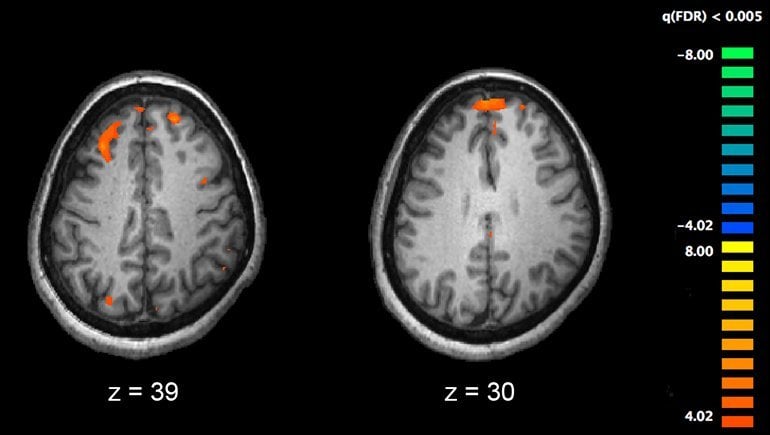Summary: People with schizotypal traits exhibited increased structural connectivity probability within the task control network and default mode network. They also had increased variability and decreased stability of functional connectivity within the DMN and between the auditory and subcortical networks.
Source: Chinese Academy of Sciences
Schizophrenia is a complex psychiatric disorder involving a wide range of cognitive, emotional, and social function impairments and altered brain structure. Recent findings suggest a continuum approach: that continuous symptoms and psychiatric disorder related traits can be integrated as risk features for the development of the corresponding disorders.
Schizotypy refers to schizophrenia-like traits below the clinical threshold in the general population. One of the phenotypic markers will be the potential change of brain structure and functional connectivity associated with the disorders. However, it is not well understood whether schizotypy is associated with specific changes in brain connectivity.
In order to bridge this gap of knowledge, Dr. Raymond Chan and his team members from the Institute of Psychology of the Chinese Academy of Sciences (CAS) have examined the brain structural and functional connectivity changes associated with schizotypy.
They recruited 87 participants with a high level of schizotypal traits and 122 participants with a low level of schizotypal traits to undergo both resting-state and diffusion tensor imaging scans.

According to the researchers, individuals with a high level of schizotypal traits exhibited increased structural connectivity probability within the task control network and within the default mode network; increased variability and decreased stability of functional connectivity within the default mode network and between the auditory network and the subcortical network; and decreased static mean functional connectivity strength mainly associated with the sensorimotor network, the default mode network and the task control network.
Results suggest that individuals with a high level of schizotypal traits do exhibit both compensatory and deficient connectivity mainly associated with the default mode network, the task control network and the sensorimotor network.
These findings therefore indicate the underlying brain connectivity adaptive changes in individuals with high level of schizotypal traits, and provide a possible neurobiological basis for the connectivity decompensation hypothesis in schizophrenia spectrum disorders.
About this psychology research article
Source:
Chinese Academy of Sciences
Contacts:
Press Office – Chinese Academy of Sciences
Image Source:
The image is credited to Kim J, Matthews NL, Park S./PLoS One.
Original Research: Closed access
“Altered brain structural and functional connectivity in schizotypy” by Yong-ming Wang et al. Psychological Medicine.
Abstract
Altered brain structural and functional connectivity in schizotypy
Background
Schizotypy refers to schizophrenia-like traits below the clinical threshold in the general population. The pathological development of schizophrenia has been postulated to evolve from the initial coexistence of ‘brain disconnection’ and ‘brain connectivity compensation’ to ‘brain connectivity decompensation’.
Methods
In this study, we examined the brain connectivity changes associated with schizotypy by combining brain white matter structural connectivity, static and dynamic functional connectivity analysis of diffusion tensor imaging data and resting-state functional magnetic resonance imaging data. A total of 87 participants with a high level of schizotypal traits and 122 control participants completed the experiment. Group differences in whole-brain white matter structural connectivity probability, static mean functional connectivity strength, dynamic functional connectivity variability and stability among 264 brain sub-regions of interests were investigated.
Results
We found that individuals with high schizotypy exhibited increased structural connectivity probability within the task control network and within the default mode network; increased variability and decreased stability of functional connectivity within the default mode network and between the auditory network and the subcortical network; and decreased static mean functional connectivity strength mainly associated with the sensorimotor network, the default mode network and the task control network.
Conclusions
These findings highlight the specific changes in brain connectivity associated with schizotypy and indicate that both decompensatory and compensatory changes in structural connectivity within the default mode network and the task control network in the context of whole-brain functional disconnection may be an important neurobiological correlate in individuals with high schizotypy.






